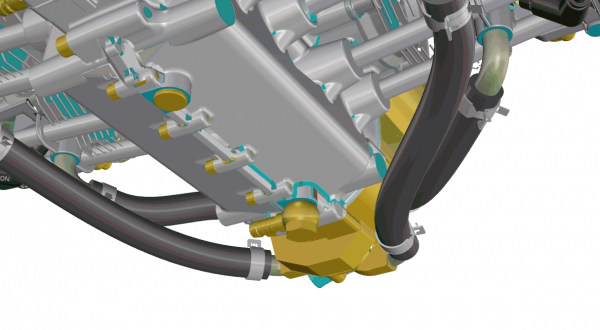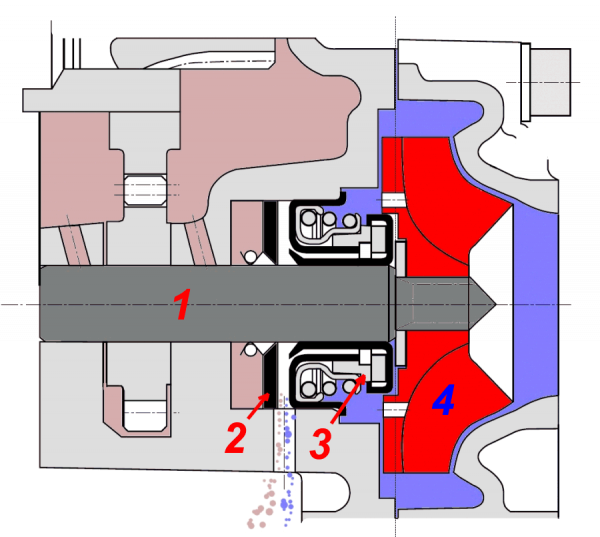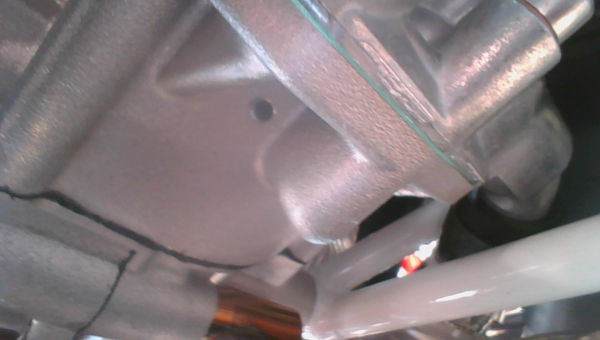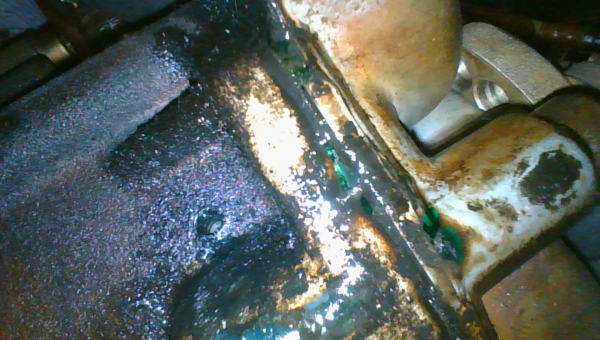the leakage hole on the igniter housing
… mostly well hidden holes and their meaning
During an engine check, you will come across the following item in the checklist:

This is one of the points where the search begins because you have never seen the holes before …

The leakage holes are actually not that difficult to find. They are located at the bottom of the engine, where the water hoses to cylinders 1 and 2 are connected to the water pump housing. The water pump housing is mounted on the ignition housing.
The only problem is that the silencer usually sits underneath and thus greatly obstructs the view.
 Here is the cross-section through the water pump
Here is the cross-section through the water pump
with the following components
- Water pump shaft
- Shaft seal ring
- Mechanical seal
- Pump impeller
The leakage hole is located between numbers 2 and 3.
A fluid leak is shown here with light red and light blue dots.

one of the drill holes
The green water pump seal can be clearly seen in the top right-hand corner and the engine mount further in the background.

Cooling water escaping from the leakage hole

Oil leaking from the leakage hole
If you notice oil leaking from the leakage hole, the shaft seal ring, which is supposed to seal the engine oil at the water pump shaft, is defective.
If coolant is leaking here, the mechanical seal is defective.
These are two ceramic rings that slide against each other under spring load and thus keep the coolant in the cooling circuit.
In both cases, the ignition housing must be dismantled and repaired by a specialist (Rotax-trained personnel who also have the necessary tools).
As an alternative, FRANZ Aircraft Engines Vertrieb GmbH offers a repair service, also with EASA Form 1 release certificate, for an igniter housing sent in.
A side note: As you may have heard, coolant should also have lubricating properties.
This is precisely what is required for the mechanical seal.